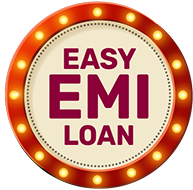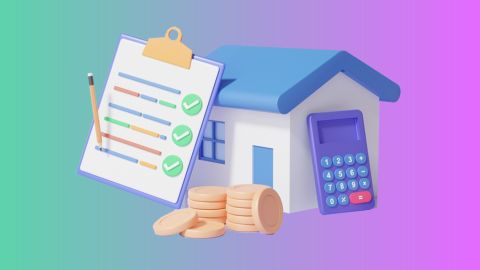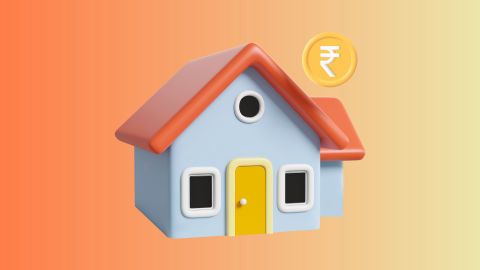An adjustable rate mortgage (ARM) is a type of loan where the interest rate adjusts periodically based on market conditions. This flexibility contrasts with fixed-rate mortgages, which maintain the same interest rate throughout the loan term. At Bajaj Finance, we offer financial solutions like the Loan Against Property, providing homeowners with versatile borrowing options suited to their needs.
How does an ARM work?
ARMs typically start with a lower initial interest rate compared to fixed-rate mortgages. This initial rate remains fixed for a set period, often 5 to 10 years, after which it adjusts periodically based on an index. This adjustment can lead to fluctuations in your monthly payments, making it crucial to understand your financial capability to manage potential rate increases.
Types of Adjustable Rate Mortgages
There are various types of ARMs, including hybrid ARMs that combine initial fixed-rate periods with adjustable rates thereafter, and interest-only ARMs where you pay only interest for a specified time before principal payments begin. Each type caters to different financial strategies and goals.
Pros and cons of Adjustable Rate Mortgages
Pros:
- Lower initial rates may mean lower initial payments.
- Potential savings if interest rates decrease over time.
- Options to refinance or sell the property before rates adjust.
Cons:
- Monthly payments can rise significantly if rates increase.
- Uncertainty in future payments makes budgeting challenging.
- Risk of financial strain if rates rise sharply.
Key terms for Adjustable Rate Mortgages
1. Initial interest rate
- The starting interest rate of the mortgage is typically set lower than fixed-rate mortgages. This rate is fixed for an initial period.
2. Adjustment period
- The time between interest rate adjustments is determined by the lender. Common periods are set annually (1 year) or semi-annually (6 months).
3. Index
- A benchmark interest rate that is used to reflect general market conditions. Common indices such as the London Interbank Offered Rate (LIBOR), the Cost of Funds Index (COFI), and the 1-Year Constant Maturity Treasury (CMT) are often used.
4. Margin
- A fixed percentage that is added to the index rate to determine the fully indexed interest rate. The margin is kept constant over the life of the loan.
5. Fully indexed rate
- The interest rate is calculated by adding the margin to the current index value. This rate is paid by the borrower after the initial fixed-rate period.
6. Adjustment cap
- Limits are placed on how much the interest rate can change at each adjustment period. Three types are typically set:
- Initial adjustment cap: The amount the interest rate can increase the first time it adjusts is limited.
- Periodic adjustment cap: The amount the interest rate can increase or decrease during subsequent adjustments is limited.
- Lifetime cap: The total increase in the interest rate over the life of the loan is limited.
7. Payment cap
- Limits are set on how much the monthly payment can increase during an adjustment period. It should be noted that payment caps can lead to negative amortisation if payments do not cover the interest due.
8. Negative amortisation
- A situation where the mortgage payment is less than the interest due, causing the loan balance to increase over time, is referred to as negative amortisation.
9. Conversion option
- Some ARMs are offered with an option to convert to a fixed-rate mortgage at a specified time or under certain conditions.
10. Hybrid ARM
- A type of ARM is started with a fixed interest rate for a set number of years (for example, 3, 5, 7, or 10 years) and then adjusted annually. These are commonly referred to as 3/1, 5/1, 7/1, or 10/1 ARMs.
11. Prepayment penalty
- A fee is charged if the borrower pays off the loan early. Some ARMs are structured with this penalty during the initial fixed-rate period.
12. Interest-only ARM
- An ARM is offered where the borrower pays only the interest for a set period (for example, the first 5 or 10 years), after which the loan is converted to a fully amortising loan.
By understanding these terms, the complexities of Adjustable Rate Mortgages can be navigated, and informed decisions about mortgage options can be made.
Understanding interest rate adjustments
Interest rate adjustments are based on specific indexes, such as the Treasury rates, plus a margin determined by your lender. Changes in these indexes reflect broader economic conditions and influence your mortgage rate adjustments.
How to choose between fixed-rate and ARMs?
Deciding between a fixed-rate mortgage and an ARM depends on your financial outlook, tolerance for risk, and future plans. Fixed-rate mortgages offer stability, while ARMs provide potential savings in the short term.
ARM payment scenarios and examples:
Scenario |
Description |
Initial low rate |
Enjoy lower initial payments during the fixed-rate period of an ARM. |
Rate increase period |
Understand potential payment increases during adjustment periods. |
Refinancing options |
Explore refinancing opportunities to lock in a fixed rate if beneficial. |
Risks associated with ARMs:
The primary risk of ARMs is payment uncertainty due to fluctuating interest rates. If rates increase sharply, monthly payments can become unmanageable, potentially leading to financial stress.
Strategies to manage ARM risks:
To mitigate risks, consider strategies like refinancing to a fixed-rate mortgage during low-rate environments, maintaining financial flexibility, and budgeting for potential payment increases.
Is an ARM right for you?
Choosing ARM depends on your financial goals, risk tolerance, and market conditions. Evaluate your long-term plans and consult with financial experts to determine if an ARM aligns with your needs.
By exploring adjustable rate mortgages (ARMs) in detail, homeowners can make informed decisions regarding their mortgage choices. At Bajaj Finance, we offer solutions like the Loan Against Property, providing flexible borrowing options tailored to your financial needs.









 Food & Beverages
Food & Beverages Grocery
Grocery Fashion
Fashion Beauty & Personal Care
Beauty & Personal Care Health & Wellness
Health & Wellness Home & Kitchen
Home & Kitchen
 Loan Against Shares
Loan Against Shares Loan Against Mutual Funds
Loan Against Mutual Funds Loan Against Bonds
Loan Against Bonds Loan Against Insurance Policy
Loan Against Insurance Policy ESOP Financing
ESOP Financing Two-wheeler Loan
Two-wheeler Loan Loan for Lawyer
Loan for Lawyer Industrial Equipment Finance
Industrial Equipment Finance Industrial Equipment Balance Transfer
Industrial Equipment Balance Transfer Industrial Equipment Refinance
Industrial Equipment Refinance Easy EMI Loan
Easy EMI Loan
 Smartphones
Smartphones Air Conditioner
Air Conditioner Led TVs
Led TVs Air Coolers
Air Coolers Refrigerators
Refrigerators Washing Machines
Washing Machines Laptops
Laptops

 Trading Account
Trading Account Open Demat Account
Open Demat Account Margin Trading Financing
Margin Trading Financing Share Market
Share Market Invest in IPO
Invest in IPO All stocks
All stocks Top gainers
Top gainers Top losers
Top losers 52 week high
52 week high 52 week low
52 week low
 Business Loan
Business Loan Secured Business Loan
Secured Business Loan Loan against property
Loan against property Loans against property balance transfer
Loans against property balance transfer Loan against shares
Loan against shares Home Loan
Home Loan Loans against mutual funds
Loans against mutual funds Loan against bonds
Loan against bonds Loan against insurance policy
Loan against insurance policy
 Term Life Insurance
Term Life Insurance ULIP Plan
ULIP Plan Savings Plan
Savings Plan Retirement Plans
Retirement Plans Child Plans
Child Plans Investment Plans
Investment Plans
 Get Bajaj Prime
Get Bajaj Prime
 ULIP Plan
ULIP Plan Savings Plan
Savings Plan Retirement Plans
Retirement Plans Child Plans
Child Plans Free Demat Account
Free Demat Account Invest in IPO
Invest in IPO Invest in Stocks
Invest in Stocks Margin Trading Facility
Margin Trading Facility
 Check your Credit Score
Check your Credit Score
 Bike
Bike Scooter
Scooter Electric Vehicle
Electric Vehicle Best Sellers
Best Sellers Popular Brands
Popular Brands
 New Car Loan
New Car Loan Used Car Loan
Used Car Loan Loan Against Car
Loan Against Car Car Loan Balance Transfer and Top-up
Car Loan Balance Transfer and Top-up
 Engagement Zone
Engagement Zone Game Zone
Game Zone
 Personal Loan EMI Calculator
Personal Loan EMI Calculator Personal Loan Eligibility Calculator
Personal Loan Eligibility Calculator Home Loan EMI Calculator
Home Loan EMI Calculator Home Loan Eligibility Calculator
Home Loan Eligibility Calculator Good & Service Tax (GST) Calculator
Good & Service Tax (GST) Calculator Flexi Day Wise Interest Calculator
Flexi Day Wise Interest Calculator Flexi Transaction Calculator
Flexi Transaction Calculator Secured Business Loan Eligibility Calculator
Secured Business Loan Eligibility Calculator Fixed Deposits Interest Calculator
Fixed Deposits Interest Calculator Two wheeler Loan EMI Calculator
Two wheeler Loan EMI Calculator New Car Loan EMI Calculator
New Car Loan EMI Calculator Used Car Loan EMI Calculator
Used Car Loan EMI Calculator All Calculator
All Calculator
 Hot Deals
Hot Deals Clearance Sale
Clearance Sale Kitchen Appliances
Kitchen Appliances Tyres
Tyres Camera & Accessories
Camera & Accessories Mattresses
Mattresses Furniture
Furniture Watches
Watches Music & Audio
Music & Audio Cycles
Cycles Mixer & Grinder
Mixer & Grinder Luggage & Travel
Luggage & Travel Fitness Equipment
Fitness Equipment Fans
Fans
 Personal Loan for Doctors
Personal Loan for Doctors Business loan for Doctors
Business loan for Doctors Medical Equipment Finance
Medical Equipment Finance Secured Business Loan
Secured Business Loan Loan against property
Loan against property Loan against share
Loan against share Gold Loan
Gold Loan Home Loan
Home Loan
 Smartphones
Smartphones Air Conditioners
Air Conditioners LED TVs
LED TVs Air Coolers
Air Coolers Refrigerators
Refrigerators Washing Machines
Washing Machines Laptops
Laptops Water Purifiers
Water Purifiers Tablets
Tablets Kitchen Appliances
Kitchen Appliances Mattresses
Mattresses Furniture
Furniture Music and Audio
Music and Audio Cameras & Accessories
Cameras & Accessories Cycle
Cycle Watches
Watches Tyres
Tyres Luggage & Travel
Luggage & Travel Fitness Equipment
Fitness Equipment
 Home Loan
Home Loan Transfer your existing Home loan
Transfer your existing Home loan Loan against Property
Loan against Property Home Loan for Salaried
Home Loan for Salaried Home loan for self employed
Home loan for self employed Home Loan EMI Calculator
Home Loan EMI Calculator Home Loan eligibility calculator
Home Loan eligibility calculator Home Loan balance transfer
Home Loan balance transfer
 Offer World
Offer World
 Articles
Articles
 Overdue Payments
Overdue Payments Other Payments
Other Payments
 Document Center
Document Center Bank details & Documents
Bank details & Documents Tax Invoice Certificate
Tax Invoice Certificate
 Do Not Call Service
Do Not Call Service
 Your Orders
Your Orders Hamara Mall Orders
Hamara Mall Orders

 Fixed Deposit (IFA) Partner
Fixed Deposit (IFA) Partner Loan (DSA) Partner
Loan (DSA) Partner Debt Management Partner
Debt Management Partner EMI Network Partner
EMI Network Partner Become a Merchant
Become a Merchant Partner Sign-in
Partner Sign-in
 Food & Shopping
Food & Shopping Credit Card Hub
Credit Card Hub ULIP Plans
ULIP Plans Top Gainers Stock
Top Gainers Stock Top Losers Stock
Top Losers Stock Saving Plan
Saving Plan Term Insurance
Term Insurance
 Live Videos
Live Videos








